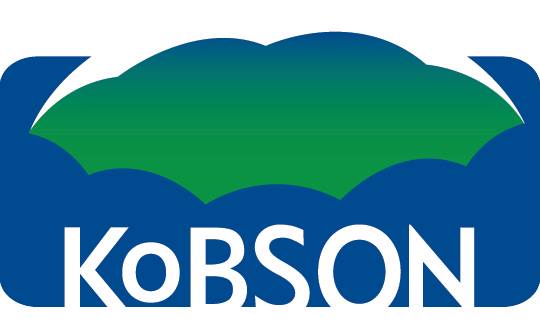DOI: 10.5937/jaes0-33617
This is an open access article distributed under the CC BY 4.0

Volume 20 article 991 pages: 852-860
In this research, the effect of vacuum on the thermal efficiency of a heat pipe solar collector is investigated. A comparative study of solar energy loss through different transparent covering materials, including different thicknesses of clear Polycarbonate (PC) and glass sheets, is performed to choose the best covering material. The results of solar energy loss tests show that for a 4mm, and 6mm thickness covering materials, transparent PC sheets have 11% and 22% less solar energy loss respectively than glass sheets. Three cases of flat heat pipe solar collector with different covering designs that are: no cover, non-vacuumed, and vacuumed double layer PC sheets are tested. Results show that the combination of a 4mm high transmittance PC cover with vacuumed spacing results in an overall collector thermal efficiency of about 70% in comparison with only 57% for non-vacuumed double layer PC cover.
The authors appreciate the support from the Mechanical Engineering Department, University of Kirkuk, for providing access to laboratories and facilities that made this work possible. This research did not receive financial support from any funding agencies such as a public, commercial, or private sector.
1. International Energy Agency (IEA). Renewables 2020, Analysis and forecast to 2025. (2020). An online report. Retrieved from: https://www.iea.org/reports/renewables-2020/renewable-heat
2. Eurostat Statistics explained (2020) Energy consumption in households. Accessed June 21 2020. Retrieved from: https://ec.europa.eu/eurostat/statistics-explained/index.php?title=Energy_consumption_in_households
3. Budihardjo, I., & Morrison, G. L. (2009). Performance of water-in-glass evacuated tube solar water heaters. Solar Energy, 83(1), 49-56.https://doi.org/10.1016/j.solener.2008.06.010
4. Kessentini, H., Castro, J., Capdevila, R., & Oliva, A. (2014). Development of flat plate collector with plastic transparent insulation and low-cost overheating protection system. Applied Energy, 133, 206–223. doi: 10.1016/j.apenergy.2014.07.093
5. Liang, J., Ji, X., Han, J., & Wang, Y. (2020). Modeling and experimental investigation on a direct steam generation solar collector with flat plate thermal concentration. Energy Exploration & Exploitation, 38(5), 1879-1892.https://doi.org/10.1177/0144598720922681
6. Papadimitratos, A., Sobhansarbandi, S., Pozdin, V., Zakhidov, A., &Hassanipour, F. (2016). Evacuated tube solar collectors integrated with phase change materials. Solar Energy, 129, 10-19. https://doi.org/10.1016/j.solener.2015.12.040
7. Abd-Elhady, M. S., Nasreldin, M., &Elsheikh, M. N. (2018). Improving the performance of evacuated tube heat pipe collectors using oil and foamed metals. Ain Shams Engineering Journal, 9(4), 2683-2689. https://doi.org/10.1016/j.asej.2017.10.001
8. Kiliç, F., Menlik, T., &Sözen, A. (2018). Effect of titanium dioxide/water nanofluid use on thermal performance of the flat plate solar collector. Solar Energy, 164, 101-108.https://doi.org/10.1016/j.solener.2018.02.002
9. Sarafraz, M. M.; Tlili, Iskander; Abdul Baseer, Mohammad; Safaei, Mohammad R. (2019). "Potential of Solar Collectors for Clean Thermal Energy Production in Smart Cities using Nanofluids: Experimental Assessment and Efficiency Improvement" Appl. Sci. 9, no. 9: 1877. https://doi.org/10.3390/app9091877
10. Azad, E. (2008). Theoretical and experimental investigation of heat pipe solar collector. Experimental Thermal and Fluid Science, 32(8), 1666-1672. https://doi.org/10.1016/j.expthermflusci.2008.05.011
11. Liang, R., Ma, L., Zhang, J., & Zhao, D. (2011). Theoretical and experimental investigation of the filled-type evacuated tube solar collector with U tube. Solar Energy, 85(9), 1735–1744. https://doi.org/10.1016/j.solener.2011.04.012
12. Shemelin, V., &Matuska, T. (2017). Detailed Modeling of Flat Plate Solar Collector with Vacuum Glazing. International Journal of Photoenergy, 2017, 1–9. https://doi.org/10.1155/2017/1587592
13. Arya, Farid, Hyde, Trevor, Henshall, Paul, Eames, Philip C., Moss, Roger W. and Shire, G. S. F. (2016) Current developments in flat-plate vacuum solar thermal collectors. International Scholarly and Scientific Research & Innovation, 10 (6). pp. 688-692.http://waset.org/publications/10004587/
14. Giovannetti, F., Föste, S., Ehrmann, N., &Rockendorf, G. (2014). High transmittance, low emissivity glass covers for flat plate collectors: Applications and performance. Solar Energy, 104, 52–59. DOI: 10.1016/j.solener.2013.10.006
15. Bozkurt, I., Atiz, A., Karakilcik, M. Dincer, I. (2013). Investigation of Effect of Transparent Covers on Performance of Cylindrical Solar Ponds, International Journal of Green Energy, DOI: 10.1080/15435075.2013.773900
16. Kalidasan, B., & Srinivas, T. (2014). Study on effect of number of transparent covers and refractive index on performance of solar water heater. Journal of Renewable Energy, 2014.https://doi.org/10.1155/2014/757618
17. Li, Z., Chen, C., Luo, H., Zhang, Y., &Xue, Y. (2010). All-glass vacuum tube collector heat transfer model used in forced-circulation solar water heating system. Solar Energy, 84(8), 1413–1421. DOI: 10.1016/j.solener.2010.05.001
18. Kern, J., & Harris, I. (1975). On the optimum tilt of a solar collector. Solar Energy, 17(2), 97–102. DOI:10.1016/0038-092x(75)90064-x
19. Demain, C., Journée, M., & Bertrand, C. (2013). Evaluation of different models to estimate the global solar radiation on inclined surfaces. Renewable Energy, 50, 710–721. DOI: 10.1016/j.renene.2012.07.031
20. Yousefi, T., Veysi, F., Shojaeizadeh, E., &Zinadini, S. (2012). An experimental investigation on the effect of Al2O3–H2O nanofluid on the efficiency of flat-plate solar collectors. Renewable Energy, 39(1), 293-298. ttps://doi.org/10.1016/j.renene.2011.08.056
21. Hollman, J.P. (2012), Experimental methods for engineers. 8th.Edition. McGraw-Hill company.







